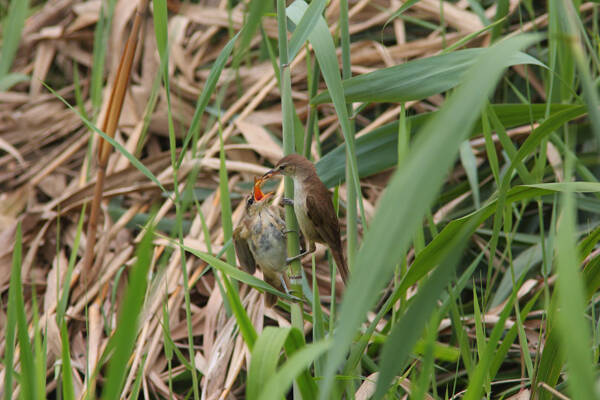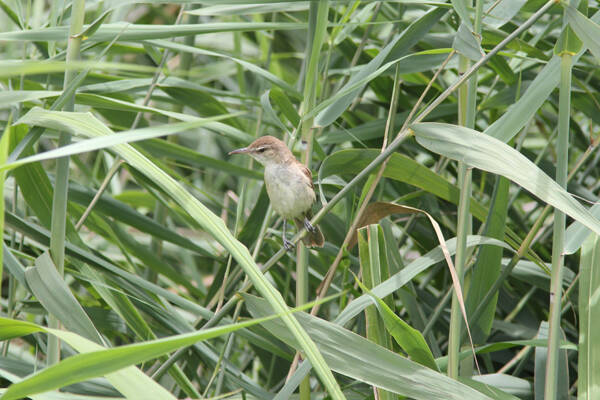Acrocephalus stentoreus
IUCN
LCBasic Information
Scientific classification
- name:Acrocephalus stentoreus
- Scientific Name:Acrocephalus stentoreus,Southern Great Reed Warbler
- Outline:Songbird
- Family:Passeriformes Ornithogalidae R.Warbler
Vital signs
- length:30g
- Weight:183-196mm
- lifetime:
Feature
The brown color in front of the eye extends from the front of the eye to the back of the eye, forming an inconspicuous eye line.
Distribution and Habitat
In China, it is distributed in southeastern Tibet, southwestern Sichuan, Yunnan and Guizhou. Abroad, it is distributed from eastern Egypt, Somalia, eastern Arabian Peninsula, southern Iran and Iraq, southeastern Kazakhstan, southern Indian subcontinent to northern Myanmar.
It lives in reeds, bushes and grasses beside lakes, rivers, ponds, swamps and other water bodies in low mountain plains at an altitude of 400-900 meters.
Appearance
It is very similar to the Great Reed Warbler in appearance, but it is thinner than the Great Reed Warbler, with longer beak, tail and legs, thinner beak, thinner eyebrow and darker color. The iris is brown, the upper beak is brown, the base of the lower beak is light, and the feet are gray-brown.
Details
The Noisy Great Reed Warbler is similar to the Great Reed Warbler. It often moves alone or in pairs. It is agile and quick, often dodging and darting quickly through reeds, bushes or grass. During the breeding season, it often stands on the top of reeds or other aquatic plants and shrubs and sings for a long time, especially in the early morning and evening. It likes to stand on the top of reeds and sing. When seeing people approaching, it immediately falls into the grass, and later secretly jumps to the top along the reed stems. If the person has gone away, it will continue to sing. When warning, it makes a hoarse "chack" or "churr" sound; the sound is sweet, interspersed with higher and sharp rattles and characteristic "ro-do-peck-kiss" phrases. The voice is more pleasant and less hoarse than that of the Great Reed Warbler; it usually sings at night.

Feeds mainly on insects and their larvae, and also eats small frogs and invertebrates such as crustaceans.

The breeding season is from May to August. The nest is built in reeds or water grass near water or water. The nest is mostly built on 3-4 strong and upright living reed stems tied together. The nest is made entirely of reeds and is generally 30-60 cm above the water or ground. The nest is deep cup-shaped, with an outer diameter of 15 cm and an inner diameter of 7.5 cm. The nest is built by the female bird, and the male bird sings nearby. Each nest lays 3-6 eggs, mostly 4-5. The eggs are pale white or greenish white, with brown, black and lavender gray spots of different shades. The egg size is 18.3-21.4 mm × 14.1-16.0 mm. The parents take turns to incubate the eggs, and the incubation period is 14-15 days. Both parents raise the chicks together.
Listed in the "Red List of Threatened Species of the World Conservation Union" (IUCN) 2017 ver 3.1-Least Concern (LC).








